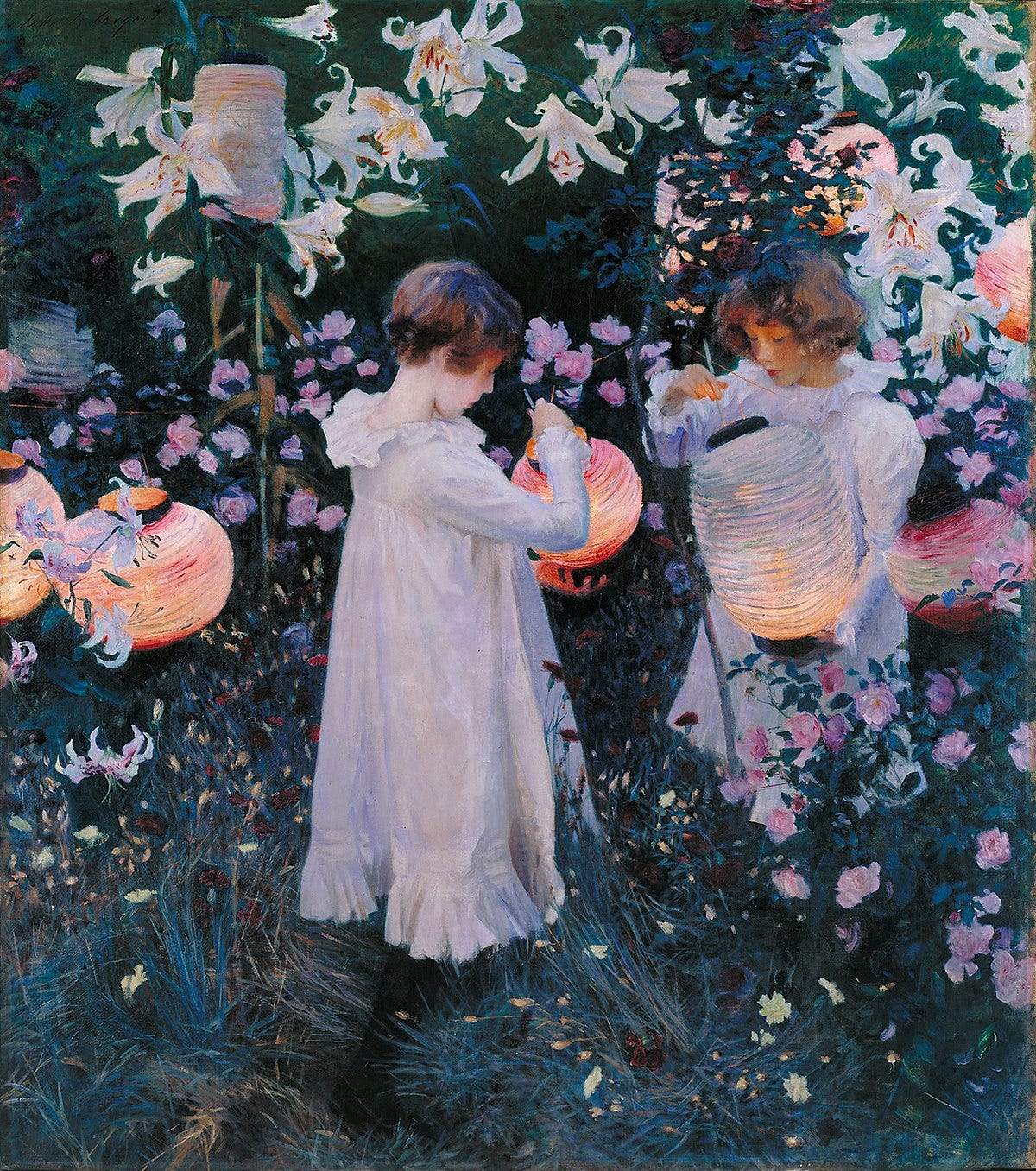The Timeless Magic of John Singer Sargent's Paintings
Why do so many people love John Singer Sargent?
When someone signs up for my newsletter, I ask them to reply with the name of their favorite artist. The name that comes up most often is John Singer Sargent. But why? I decided to find out.
A Worldly Beginning
John Singer Sargent was born on January 12, 1856, in Florence, Italy, to American parents. His parents traveled around Europe for years. Although Sargent considered himself American, he visited the country for the first time when he was already 20 years old.
By the time he was 18, he had lived in many European cities, including London, Paris, Venice, Salzburg, Nice, Lake Maggiore, Dresden, and various others in Spain. He spoke English, French, German, and Italian fluently.
Yet, Sargent's life was pretty lonely, and he didn’t go to a regular school. His mother was an amateur artist, and she supported his talent. His father gave him a classical education at home. This mix of privilege and isolation gave Sargent a unique view of the world, which was later reflected in his art.
Blending Tradition with Innovation
What makes Sargent unique is the way he mixed traditional and modern styles. He learned the techniques of the old masters but added his own modern touch. His portraits are famous for showing the personality and mood of his subjects, not just how they looked.
Sargent didn’t stick to one artistic movement. He took ideas from many sources, including Impressionists and Realists, but his work always remained unique. This blend of different styles made his art both timeless and innovative.
The "Madame X" Scandal
Sargent’s career wasn’t without problems. His painting "Madame X" caused an uproar when it was revealed in 1884. The portrait of Madame Pierre Gautreau, a Parisian socialite, was meant to be bold and show his skill. However, the provocative pose and revealing dress caused great controversy when it was exhibited at the Paris Salon.
The negative reception to "Madame X" was a severe blow to Sargent. Critics called it scandalous, and the backlash affected his reputation in Paris. This controversy made Sargent rethink his career and ultimately led him to move to London.
Rising to Fame in London
Moving to London was a pivotal moment for Sargent. He quickly became a leading portrait artist, attracting the attention of the British elite. His skill in capturing the essence of his subjects made his portraits highly sought after.
People loved his work and hired him to paint their portraits. He earned about $5,000 per painting, which is around $130,000 today. He didn’t use assistants and, in the 1890s, averaged about 14 portrait commissions a year.
Sargent painted portraits of many high-profile individuals, including two U.S. presidents, Theodore Roosevelt and Woodrow Wilson, and literary figures like Robert Louis Stevenson.
One of his major successes was "Carnation, Lily, Lily, Rose" (1885-1886), which shows two girls lighting lanterns in a garden. This iconic painting was inspired by an evening boating trip along the Thames, during which Sargent saw Chinese lanterns hanging in the trees.
Masterpieces and More
Sargent created many important works. Portrait of Madame X is famous not just for the scandal but for its bold style and elegance.
"El Jaleo" (1882), showing a Spanish dancer, highlights his skill in capturing movement and atmosphere.
His portrait "Lady Agnew of Lochnaw" (1892) is often seen as a perfect example of his style. Lady Agnew's relaxed pose and intimate expression reveal his talent for making portraits that feel grand, personal, and almost real.
Sargent’s talents went beyond portraits. He was also a skilled landscape painter and muralist. His "The Triumph of Religion" murals at the Boston Public Library and murals at the Museum of Fine Arts, Boston, show his versatility and ambition.
A Lasting Legacy
John Singer Sargent died on April 14, 1925, in London, England, of heart disease.
During his lifetime, he created about 3,000 paintings, including 900 in oil and 2,000 in watercolor, in which he documented his travels from Venice to the Tyrol, Corfu, Spain, the Middle East, Montana, Maine, and Florida. His works provide a visual diary of his journeys and the various cultures he experienced.
These works made him rich and famous, but by the time he died, critics didn’t see him as “modern” enough. He went from being a prodigy to being viewed as an old-fashioned artist of the Gilded Age.
Sargent considered Boston his American home. The Museum of Fine Arts, Boston, holds the most complete collection of his work and his archives.











I recently wrote about John Singer Sargent in my piece about fashion! I am drawn to his work because of his active role in styling his sitters, his vivid imagination, meticulous attention paid to garments and colors and all their nuances. (You probably already know this, but there's an excellent exhibition on Sargent at Tate Britain, called Sargent and Fashion.)
Thank you for writing a concise review! He’s one of my favorite artists too; what drew me to his work at first sight was the beauty and skill in each portrait. Each of his works seems to breathe, his portraits of children are particularly vivacious - as his sitters must have been.